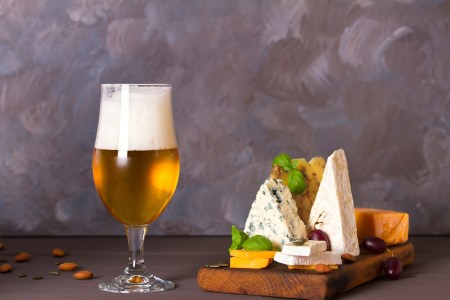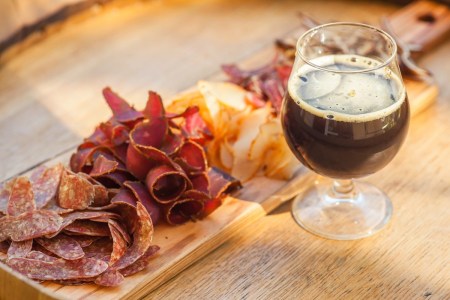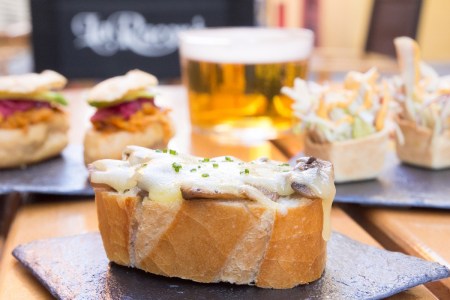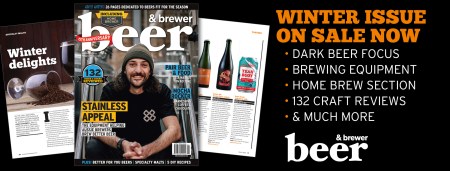
In her continuing series of Senses Working Overtime articles for us, sensory analyst Briony Liebich from Flavour Logic helps narrow down beer and food pairing into digestible steps to get your creative juices flowing.
The complexity of beer flavour is one thing, but adding food brings a whole other level of complication. While many pairing rules help beer lovers navigate the process, they should be considered prompts for adventurous eaters to give things a try. There are abundant combinations, with some being better than others. Your best guide is your own palate, so follow it.
Why put in the effort?
Simple: if you already love beer, you’ll love it even more. In the words of Garrett Oliver, author of The Brewmaster’s Table, “it will improve your life, plain and simple. Great beer is an affordable luxury”. These are wise words.
Pairing can be as simple or as intricate as you like. An easy first step is to match the colours or flavours of beer and food. For example, chocolate stout with a chocolate brownie or kriek with cherry strudel. This is a good start, but it’s guaranteed you’ll get more palate satisfaction by drawing on subtle elements that contrast or integrate flavours, much like an orchestra works in synchronous harmony.
Getting to know each other
Successful pairing relies on getting to know key elements of the beer and food on their own. Whether you first choose the beer to pair with food or vice versa, the approach is the same. Consider the dominant aromas, basic tastes, intensity and mouthfeel sensations.
Weigh up the ingredients, preparation techniques, sauces and garnishes that affect the finished goods. For beer, this could be a simple tasting note: amber ale with a focus on caramel malts, low hop character and bitterness, dry and overall medium intensity. Once you’ve figured out the separate features, you can start homing in on what might complement or clash with the pairing you plan to work with.
Many Winter seasonal releases focus on rich, dark and malty styles with chocolate, coffee and roasty flavours. You’ll see beers like pastry stouts inspired by cakes, biscuits and desserts. Cooler weather draws us to warming styles like porter, red or black IPA, dark lager, barley wine, Belgian ales and all kinds of stouts. These beer flavour profiles lend themselves to merging with robust flavours of Winter dishes – think hearty stews, roasts, baked puddings and rich tarts.

Why does dark beer pair with food so well?
While all carbonated beers make brilliant palate cleansers to counter the effect of fatty and oily foods, dark beers have an advantage by sharing flavours with common cooking methods and kitchen essentials. Malt-forward beers display toasty, biscuity, caramelised and roasted characters that find parallels in baked goods and cooking techniques of roasting, grilling and braising. Malted grain is usually roasted before being used in brewing. Roasting barley gives nutty, toasty and smoky aromas while sugars in the barley that caramelise due to the Maillard reaction can deliver caramel, toffee and sweet perceptions.
Balance intensity and weight
Balance is the key to everything. Decent pairings are more likely to occur when one component doesn’t overpower the other. The core beer and food elements must match overall intensity. Beer intensity could be related to sweetness, bitterness, alcohol, levels of roast or yeast-derived fruitiness or spiciness. For food, there is added diversity due to cooking methods, acidity, saltiness, fat, spices, chilli heat, serving temperature and more.
Take BBQ sausages and fried onions for example: while there is fattiness and chargrilled flavours in the food, these aren’t too intense to overwhelm a dark lager or amber ale.
Now imagine a rich gravy, creamy mashed potatoes and sauerkraut on the side: overall flavour intensity has stepped up a notch so you can serve a beer with more roast, body and bitterness. Try a dry stout or even a tart, funky Flanders Brown to bring some brightness to the dish.
Be aware of what the beer and food bring to the table in terms of intensity, and you’ll be on track for a satisfying pairing.

Set up a hook
Now you’ve got to know the beer and the food, and they share similar intensity, the next step is where the fun begins. Try finding a linking flavour or sensation that brings a combined “wow” factor. Common terms you’ll see for this are cut (or cleanse), complement and contrast.
The main cutting power that beers have is through alcohol, hop bitterness and carbonation, which is the perfect palate cleanser when eating fatty, oily or creamy foods. Finding similar tastes works like building a flavour bridge, such as oatmeal stout showcasing chocolate and mild sweetness that complements milk chocolate truffles. They say opposites attract, which is true for pairing. A classic sweet and salty example is roasty stout with tangy blue cheese. Don’t forget about mouthfeel sensations like bubbly and fatty, for instance, contrasting a well-carbonated Belgian Tripel with ripe gooey double brie.
Think about sorting flavours into opposite groups like delicate and heavy, bright and rich, creamy and sharp. How about a bright citrusy herbal red IPA with rich orange and almond syrup cake? Delicious.
Trust your senses
This is the most important tip as sensory perception is subjective and individual. What you find a magical match is someone else’s train wreck. Your taste buds instinctively know what goes well together. By tuning into your senses and trying different fusions you’ll discover your own remarkable pairings.
In our soon-to-be-released Spring edition, Briony will be looking at how vital our sense of smell is to the overall sensory experience and how you can up your tasting game. Subscribe to Beer & Brewer magazine.

